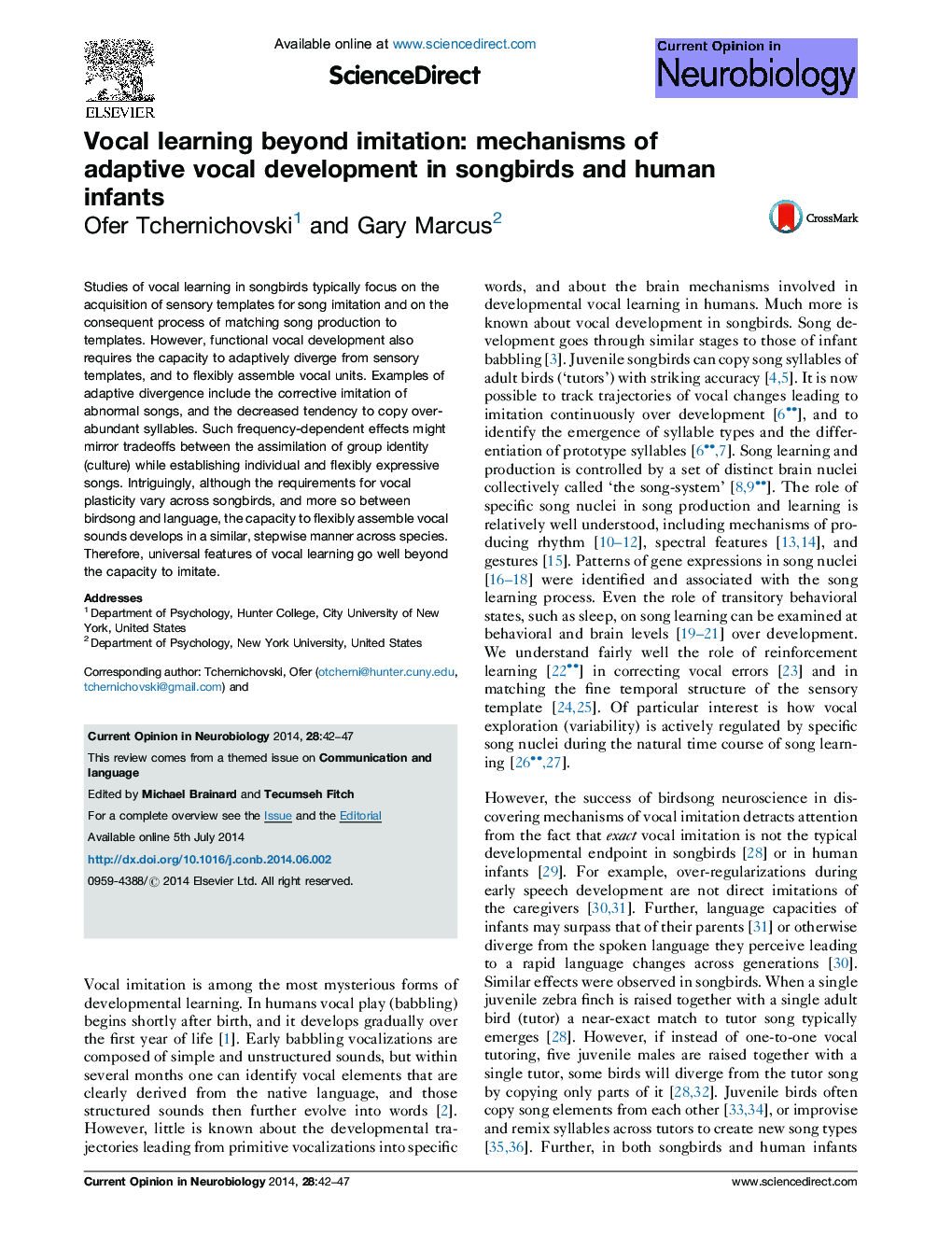| Article ID | Journal | Published Year | Pages | File Type |
|---|---|---|---|---|
| 6266656 | Current Opinion in Neurobiology | 2014 | 6 Pages |
â¢Adaptive vocal development extends beyond imitation and template-matching.â¢Songbirds and humans share the capacity to converge towards species-typical vocalization.â¢The capacity to flexibly assemble vocal sounds develops in a similar, stepwise manner across species.â¢Those capacities can explain multi-generational phenomena such as vocal culture.
Studies of vocal learning in songbirds typically focus on the acquisition of sensory templates for song imitation and on the consequent process of matching song production to templates. However, functional vocal development also requires the capacity to adaptively diverge from sensory templates, and to flexibly assemble vocal units. Examples of adaptive divergence include the corrective imitation of abnormal songs, and the decreased tendency to copy over-abundant syllables. Such frequency-dependent effects might mirror tradeoffs between the assimilation of group identity (culture) while establishing individual and flexibly expressive songs. Intriguingly, although the requirements for vocal plasticity vary across songbirds, and more so between birdsong and language, the capacity to flexibly assemble vocal sounds develops in a similar, stepwise manner across species. Therefore, universal features of vocal learning go well beyond the capacity to imitate.
